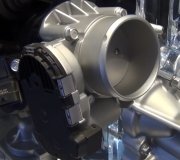In order to effectively help you and to provide you with accurate information, you should always indicate which engine model you have. Chrysler placed two versions of its V6 in the 300. (2.7 and 3.5)
I am assuming yours is the 2.7, since those have the PCV systems that are hardest to get to. The reason a shop will charge you so much is because the upper intake manifold needs to be removed to get to the PCV. (Blame that on the geniuses at Chrysler)
Here is the procedure for replacement. I recommend you purchase a service manual for your vehicle. This will provide you with detailed illustrations and come in handy on your next project.
The positive crankcase ventilation (PCV) valve is located under the intake manifold on the right bank of the engine.
Loosen the hose clamp from air inlet tube. Position the tube away from the throttle body.
Remove the exhaust gas re-circulation (EGR) valve tube.
Remove the PCV hose from valve.
Note: The upper intake manifold just needs to be loosened and position aside enough to gain access to the PCV.
Loosen the intake manifold bolts and position the intake manifold aside enough to gain access to the PCV valve.
Remove PCV valve from the cylinder cover.
Installation is reverse of removal.
If I have helped you, please take the time to vote for me, as my reputation pays my bills. Thanks, Ernest.
Friday, February 12th, 2010 AT 10:21 PM


